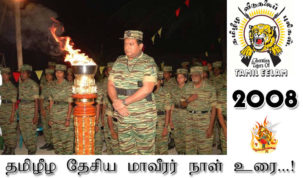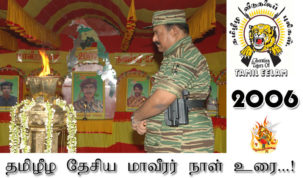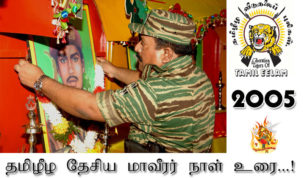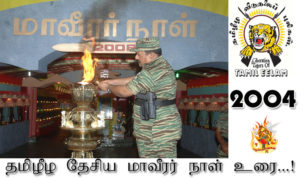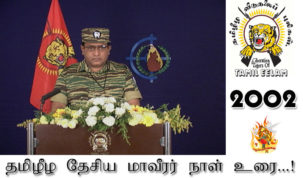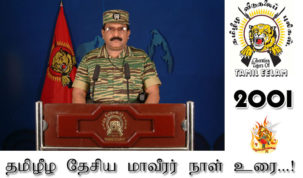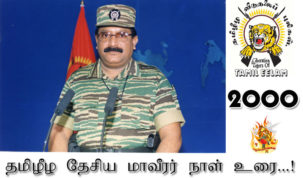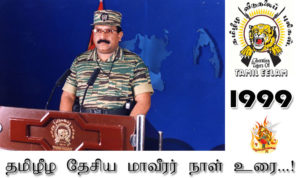Global history has taken a boost from the current conflicts, protests and riots against corporate globalisation, and the threat of worldwide terrorism against the West. These events fit into a global pattern of the rise and fall of societies, that can be traced back to ancient times. True of all the ancient empires we know, the cycle of rise and decline appears to be accelerating. The twentieth century saw the collapse of seven great empires - Mandarin China, Germany, Austria-Hungary, Ottoman Turkey, Japan, the British empire, and twice over in the case of Tsarist and Soviet Russia. Since the events of September 11th, 2001, the twenty-first century seems likely to threaten the sole remaining superpower, the United States, with nemesis.
The key to the formation, survival and decline of all historical societies is their use of surplus income and resources. Without the extraction, by an elite, of products surplus to immediate requirements - in the form of food, arms, luxuries and other goods and services produced by farmers, craftsmen, traders and servants - no society, beyond the most primitive, would be able to afford the protection, law and order, administration, defence, spiritual advice, personal services, cultural production and so on essential to its existence. This is so obvious that it scarcely needs expressing, yet we know little about the way it arose out of the chaos of pre-civilised experience. The rise is shaded in pre-history, since the formation of a society cannot be known until it has acquired the tools - written language or a reliable oral tradition - to express it.
The few traditional sources that look back to the time of state formation, are mostly so tainted by accumulated myth that they confuse more than they inform. In the eighth century bc, Homer looked back some five hundred years: but even in that epoch kings of small island and city communities already existed and the process was substantially complete. Priam's Troy was already a rich state worth plundering, with gold as well as plentiful food, equipment and weapons. Though the Greeks who attacked it were thugs and pirates, they too were 'civilised' in the sense of being resourced by a home population that could provide them with the means of subsistence and warfare.
The Hebrew Testament, which was compiled over a period of more than a thousand years, tells the story of the formation of the Jewish nation from Semitic desert tribes united by the myth that they were descended from a common ancestor with a personal relation to God, and that in the fifteenth century BC they escaped from slavery in one of the most famous civilised societies - one which was itself already a couple of millennia old. The Hebrew account is detailed and persuasive, but it does not address the problem of how such societies arose, and indeed shrouds it in assumptions of prior state formation in both Egypt and Canaan.
It also shows how the various groups who extract surplus from the producers can compete between themselves: in this case the prophets and priests, who claimed to speak for God and demanded offerings in His name, were in competition with warrior kings whom the priests created at the people's demand and yet still, if ineffectively, controlled.
That competition illustrates two of the three main ways in which the extraction may be practised, by warriors, priests, bureaucrats or capitalist merchants, that is, via politics, professional service, or economics.
The origins of other civilised societies are so embedded in myths and miracles that it is almost impossible to guess at the underlying reality. The Chinese emperor was the Son of Heaven and essential to producing a good harvest (the main source of the extractable surplus), but we know little of how he persuaded his subjects to accept his semi-magical role and material extraction rights. The Japanese emperor was descended from the Sun God, Amaterasu, but whether he achieved his surplus income by charisma, spiritual aura, or force, we can only guess. When Buddha sat under the Bhodi tree, Hindu society was already a thousand years old, and he was not concerned with organising society - except perhaps for the monks of the Sangha - but with escape from the cycle of life and human existence. The Mayans, Incas and Aztecs all have had their creation myths, but these tell us equally little about how their societies actually came into being.
In the absence of reliable sources, we can only guess at the process of societal formation. No society, though, could avoid extracting surplus from the producers for the use of the organisers. Even the most primitive hunting and gathering bands had their chiefs and matriarchs, weapon and tool makers, and shamans or witch doctors who had to be supported, and their part-time services needed subsidy by the rest. No doubt the dominant elite emerged from among these specialists, especially when settled agriculture produced a larger surplus, but the process is beyond modern knowledge. It is as mysterious as Archdeacon William Paley's analogy of the pigeons (in Principles of Morals and Political Philosophy, 1785), where, to explain the institution of property, he compared human society to a flock in which one pigeon sits back while the rest bring him the bulk of their gathered corn with no payment in return. (Offending his own superior extractors, 'Pigeon Paley' thereby lost his hope of a bishopric.)
There are three major means by which surplus income and resources are extracted. A good analogy is a three-sided pyramid. Its sides represent different ways of extracting surplus from the producers, by three different sorts of elite. The three faces can, after Max Weber, be labelled Power, Class and Status; or the political/military, economic/ commercial, and socio-cultural means of extraction. The three extracting elites are strong men (warriors, conquerors, home-grown mafia); profit takers (merchants, industrialists, capitalists); and professionals (charismatics, priests, bureaucrats, lawyers). Which of them succeeds in dominating a particular society and establishing the right to priority extraction depends on its specific history and what the elite have to offer in exchange: internal protection and external defence, a share in increased wealth and income, or religious, personal or administrative services.
Once the system is inaugurated and surplus income flows freely, however, those who control the flow ensure that they absorb benefits from the other two faces. Military conquerors quickly turn their political/military power into status and income: their ad hoc campaign leadership roles (duke, baron, knight) rapidly become permanent titles of honour, and their tribute, taxation, or control of the scarce resource, the land itself (i.e. the right to labour service, crops or money rent from it) also ensure income and accumulated wealth. Merchants who come to dominate a society, like the commercial oligarchies of Renaissance Italy or the Netherlands, swiftly acquire civic honour and military power as well as profit and property.
Interestingly, priests and bureaucrats, like the Roman Church, Buddhist monks, or the Chinese mandarinate, have special advantage. While conquerors and profit makers are often resented and only reluctantly obeyed, priests and bureaucrats operate by persuasion and extract voluntary contributions from the faithful or visibly necessary taxes from the beneficiaries of their administration. The keys of heaven and hell gave the Papacy a means of selling eternal life to the believers, who bought it so avidly that at times almost a third of the land of medieval England, for example, ended up in the hands of the Church, a process which had to be limited by the Statute of Mortmain, 1279.
The Lamas of Tibet maintained the loyalty and voluntary contributions of their followers through repeated Chinese occupations, and still do. The imperial Chinese bureaucrats were less beloved but were recognised, with the emperor, as the guarantors of the harvest and masters of the flood control system. Even the Bolsheviks in 1917 persuaded the Russian peasants that only they had the bureaucratic expertise to provide bread and land.
Every elite knew that persuasion was more efficient than force or purchasing power in maintaining the loyalty and obedience of the population and took steps to propagandise to that end. Public relations are cheaper and more seductive than naked violence or the manipulated price of labour and commodities, and all governments saw reason to preach their own ideology as the best means of retaining power. Religious, tribal or nationalistic unity held elite and people together, especially if the community was threatened from outside. We know from the insights of Benedict Anderson and Linda Colley how 'imagined communities' can convince themselves of common interests, notably against external enemies, which often contradict their material advantages.
It is amazing how long some communities have held together in the face of extraction rates that amount to exploitation or predation. The Aztecs taking their daily human sacrifices and facing their temples with skulls, the Romans increasing taxation and the weight of slavery in an empire threatened by barbarians, the medieval Papal crusades against internal heretics like the Cathars of southern France, or the Tsarist Russians expanding serfdom while Western Europe was reducing it, all show how the most oppressive of societies can survive for long periods. Propaganda and brute force can hold societies together provided that exploitation is not seen to be unbearably excessive. This gives a hint of the ordering of priorities between the three forms of elite extraction. It is usually assumed that conquest by external warriors or internal dominance by mafia-type strong men is the norm, and that their main competitors, as in Marxist theory, are the merchant-capitalists of the towns. To the contrary, it may be that the non-violent, non-commercial professionals came first.
Before conquerors can take over a society it must already be organised, and at a level of material production to make it worth the effort. Traders and profit-makers need an organised society with laws governing property, contracts and exchange before they can operate successfully except at the margins, which means that the economic face necessarily waits upon the establishment of reasonably settled communities.
Since humans fear the unknown, death, disease, and perdition more than they fear their mortal enemies, men and women probably ran to shamans and wise women long before they settled in villages and towns. Priests, seers and prophets, witches and medicine men were in a strong position to inaugurate their own system of extraction. The power of priests in a fearful age extends over the warrior kings themselves, and over the traders whose portable wealth is subject to its own vulnerability. It was not for nothing that warrior kings called on the priests to bless them before battle and pray to their gods to bring them victory. And merchants, far from being sceptics, were often the agents of religious fervour and proselytism on the shifting trade routes between civilisations. Most major religions, like early Christianity, Buddhism and Islam, migrated along the trade routes with the cargoes of merchants and the backpacks of missionaries.
One ancient source demonstrates how the agents of God emerged before the warrior kings and then imposed on them. The history of Israel as a nation begins with the priestly Moses, who led his people out of bondage. Thereafter, the 'chosen people' are led by priests and prophets who regularly bring them back after multiple apostacies to the true God, but exercise tight control over their conduct, especially towards the priests and their rights.
This model of voluntary surplus extraction set the pattern for all sacerdotal societies. In exchange for spiritual services and mediation with God, the priests and prophets lived handsomely, with the best cuts from the burnt offerings, gold embroidered clothes, and prime accommodation in and around the temples. Their first duty was to prove their authenticity by out-competing the priests of rival faiths. They could then turn their efforts to controlling the morals and rites of the tribes in order to propitiate their God. In doing so, they increased their own control over the nation and reinforced their right to surplus extraction. They did not do so without struggle. The Israelites rebelled against them whenever they were absent, as Moses found in Mount Sinai when Aaron made the golden calf; but Moses and the Levites always managed to persuade them back into the fold.
Even more telling was their control of the warrior leaders. The prophets could not themselves fight and used warriors like Joshua and David in battle, who turned out to be models of belief and obedience. But the priests' supreme test came with the people's demand for a king to defend them against their neighbours. The prophet Samuel's anointing Saul as king is the paradigm of this transition from priestly to royal surplus extraction. When the Israelites asked for a king to lead them against the Philistines, Samuel warned them that he would become a tyrant. The people persisted, so Samuel called down a thunderstorm on the harvest and threatened them with starvation. He finally relented on condition that they and their king obeyed the Lord - that is, continued to obey God's will as ordered by Samuel and his sons, the priestly judges.
King Saul and his successors David and Solomon did exactly as Samuel foretold. They built a vast palace and a magnificent temple, brought hundreds of young men and maidens into their personal service, and even stole their wives and daughters, as in the case of David and Bathsheba. They triumphed in battle and slaughtered their enemies, but never thoroughly enough for the priests. When God through Samuel ordered Saul to destroy the Amalekites, every man, woman, and child and all their flocks, and the king slew only the people, Samuel sent him back to slaughter the animals and to hew the captured King Agag into pieces.
In other words, while the priests were willing to give up a share of their surplus extraction to mollify the people and defeat their enemies, they made sure it was on their own terms and they kept overall control of the king. That struggle between these two faces of the pyramid, the military/political elite and the professional/sacerdotal, has continued throughout Western history and is the main source of the unique pluralism of European civilisation. The upside of this rivalry is that when exploiters fall out, exploitees sometimes come into their own again. The limited freedom of intellectuals in medieval universities, the great source of dissident and innovative thinking in the modern West, owes much to the division between church and state which began with Samuel and Saul and continued into Christian Europe.
In the end, all elites face the temptation to turn extraction into exploitation. Once a system of extraction is in place, the elite are tempted to take more and more and to think that unlimited power, wealth and comfort are theirs by right. Concentrations of wealth begin to appear far beyond the real needs of the elite and more than the society can reasonably afford. These concentrations may, for example, be royal palaces and aristocratic houses full of luxuries and servants, great estates privatised out of the common pool of land for private hunting and enjoyment, access to unlimited personal service, private transport, and bodyguards. The palaces of the Roman, Chinese or Russian emperors at Capri and Agrigento, the Forbidden City and Summer Palace, and the Hermitage and Tsarskoe-Selo, far removed from their public functions, are one symptom of excess. Even in the twentieth century, the private rations, special shops, accommodation, dachas, social clubs, hunting estates and brothels of the Soviet nomenklatura, and the gated and guarded housing compounds of the American corporate rich, were evidence of excess extraction - not to mention the steel barriers and armed police guarding the WTO, IMF, World Bank and G8 leaders at their annual summits.
In the public sphere, great public buildings, monuments, temples and mausoleums are a sign of excess. The Parthenon marks the excesses of 'democratic' but imperialist Athens in its golden-age exploitation of the colonies of the Delian League. The Persian and Egyptian temples and palaces were a tempting invitation to Alexander's Macedonians and the later Romans, Mamluks, Arabs and Turks, which the subject populace did not too eagerly defend. The palaces and mosques of the Mughal emperors, Muslim symbols of oppression over the Hindu population, marked the decline of their rule and their vulnerability to intruders. Even the enigmatic stone gods of Easter Island represent an extraction of labour from a servile population that ended, to judge from the archeological evidence, in revolt and the extermination of the ruling elite.
The building of St Peter's in Rome and its accompanying art works were, through the selling of indulgences to pay for them and the Papacy's lavish life style, the immediate cause of the Reformation. Even the puritan Oliver Cromwell succumbed to the temptations of easy riches and emulated Charles I in his courtly extravagance and the ostentation of his daughter's wedding.
The FabergÀ eggs and jewels of the Romanovs were, along with the fabulous art works of the Hermitage, an expression of Russian autarchy and foretold its ultimate collapse. Latterly, the multi-million dollar extractions of the Marcoses in the Philippines, the Sukarno and Suharto families in Indonesia, Nkrumah in Ghana, Idi Amin in Uganda, Daniel Arap Moi in Kenya, Milosovic in Serbia, and Mugabe in Zimbabwe are examples of the inability of dictators to keep their hands out of the public till.
The main objection to predatory extraction is not merely injustice. It is the threat to societal survival which this excess entails. Marx wrote about the contradictions of capitalism, resulting from the inability of the producers to buy their own products, and the consequent cycle of economic depression and decline which inevitably follows. In truth, the same contradictions apply to all historical societies where the elite takes more than a reasonable share of the available resources. If the elite takes too much, the general populace is unable to consume the products of its own industry. In theory, the elite can, as Malthus argued, spend their gains on luxury goods and services and still support the economy, but in practice they never spend enough on the mass consumer goods that drive the economic cycle. As Keynes suggested, they hold much of their wealth in liquid form (in modern terms, in Swiss bank accounts), which stultifies production. The result is increasing depression and discontent and, ultimately, economic implosion.
Even before implosion occurs, discontent can take moral and political forms which threaten the stability of the state. Long before depression becomes a direct threat, morale sinks to perceptible lows, to show itself in the form of increased crime, alcoholism, drug dealing, foot-dragging and absenteeism at work, and low levels of productivity, and the defence of an alienated government is viewed with indifference or hostility. In the late Western Roman empire the increased weight of slavery in the countryside and heavy taxation in the towns made the populace indifferent to the survival of the state, and defence was left to German mercenaries who eventually overran the government and usurped the emperor's power.
The problem is exacerbated when the elite are of a different ethnic group or religion from the main population. In the exploitation of China by Genghis Khan's Yuan dynasty the peasants rallied against the Mongols to Zhu Yuanzhang, the peasant warlord who threw them out and founded the Ming dynasty in 1368. The Muslim Mughals were always fearful of their Hindu subjects and could not rely on them to fight against European rivals, notably the British. In reverse mode, the Indian rulers of East Kashmir are violently resented by their Muslim subjects. Even the Popes protected themselves against their co-religionists with a Swiss Protestant bodyguard. Although not technically alien, the Russian Tsars and pomeshchiki were so aloof from their subjects that they spoke French rather than Russian and lived in a Western rather than Slavonic culture. Having paradoxically extended their extraction rate when they abolished serfdom at the cost of heavy redemption dues, the landed aristocracy saw their legitimacy challenged by the peasants who thought them an alien burden and declared in the 1905 Duma that 'We are yours but the land is ours'. Even without, or before, revolution or foreign invasion, states can decline of their own inanition.
So, while we know little about how societies were first organised for surplus extraction, we know a great deal about how they survive and eventually decline. The larger the society, the greater the opportunity to extract surplus from an immense territory and population. That is why great empires decline and fall - eventually - faster and further the more they exploit.
Paul Kennedy has shown how superpowers decline through external causes, specifically 'imperial overstretch' when the military costs of expansion and defence exceed the fiscal capacity of the state. This is undoubtedly an ancillary cause of economic and political decline, but it is really a by-product of the internal problem, the failure of surplus extraction to match the rulers' ambitions. It reflects the comparative size of the resource base and the rising cost of military and economic power in an increasingly competitive world. No European power acting alone can compete on the scale needed for superpower status at the turn of the twentieth and twenty-first centuries. The cost of projecting power escalates exponentially with the cost of modern weaponry, and the resource base required to qualify as a superpower expands with it.
Only two super-states survived the Second World War with a sufficient extraction base, and one of them has since collapsed. But the decline of both superpowers, through excessive surplus extraction from their 'spheres of influence' if not at home, has lessons for the current state of the world and its sole remaining superpower, the United States.
The question now is, what lesson does this hold for the current hegemonic power? Is the United States any more immune to decline than previous ones? Or is 'the end of history', so confidently forecast by Francis Fukuyama, able to halt the direction of change and continue 'the American century' far into the new millennium? Despite the lightning success in Afghanistan, the inability of the United States to impose its will on such insignificant powers as Somalia, Iran, Iraq, Serbia, North Korea or East Timor - or to guarantee its citizens at home or abroad immunity from suicidal Al-Qaida terrorists - suggests that the empire is not invincible. It cannot bring itself, it seems, to rein in the multi-national corporations that now manipulate the global economy for their own profit and force genetically modified crops, polluting industries, and monopolistic services on other countries. Global warming, disproportionately caused by the US, is already backfiring on America with disasters like Midwest and Texan floods, Californian forest fires, Atlantic coast hurricanes, and encephalitis-carrying mosquitos in New York.
Earlier empires declined because the elites took more than their share of income and resources and paid the price in internal malaise, depression, rebellion or external conquest. The American is the first empire in which the whole home population, though very unequally, shares in the exploitation of the whole world. Will the rest of the world accept this unequal balance? Or will it revolt against being dragged down into economic and climatic chaos?
Surplus extraction, without which civilisation and decent human life are impossible, can too easily slip into exploitation and so lead to self-destruction. The best hope of avoiding this pessimistic finale is to recognise the danger and find the means to avoid it. The first requisite is to end the excess and seek a balance between reasonable extraction and reckless exploitation. This has the advantage of also producing a more egalitarian and socially just society, not only for the sake of the many but for the salvation of the few, the elites themselves who have most to lose from decline.
The ancient Greeks had a solution, though even they failed to implement it, as the excessively costly Parthenon built on colonial exploitation demonstrates. It was the golden mean: 'Nothing in excess'. With the world's population just passing the 6 billion mark, more than a third of it living in poverty, it is surely time to practise moderation.
· Harold Perkin is Professor Emeritus, Northwestern and Lancaster Universities; Honorary Professor, Cardiff University.




